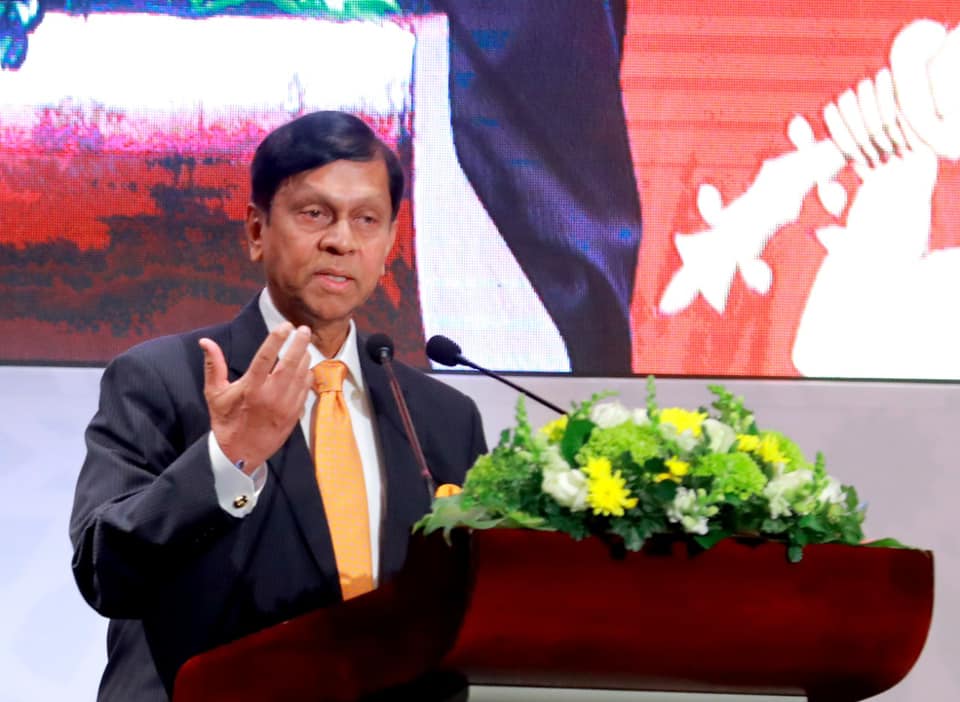
Responding to the ongoing economic crisis in Sri Lanka, Fitch Rating agency has downgraded the country’s Long-Term Foreign-Currency Issuer Default Rating (IDR) to ‘CC’, from ‘CCC’, a move that reflects the dire state of Colombo's finances.
“The downgrade reflects our view of an increased probability of a default event in coming months in light of Sri Lanka's worsening external liquidity position, underscored by a drop in foreign-exchange reserves set against high external debt payments and limited financing inflows. The severity of financial stress is illustrated by elevated government-bond yields and downward pressure on the currency” the report notes.
Sri Lanka's Central Bank has decried the move as 'reckless' and pleaded to investors to "not be dissuaded by such actions".
Reckless action by #rating agencies continues despite being informed of the imminent #inflows as outlined in the Six-month Road Map. #Investors are advised not to be dissuaded by such action. Progress of inflows will be announced during this week. @FitchRatings #RoadMap #SriLanka pic.twitter.com/afq8hmDiZU
— CBSL (@CBSL) December 18, 2021
Plummeting foreign-exchange reserves
The report further details that Sri Lanka’s plummeting foreign-exchange reserves have declined by an estimated USD 2 billion since August, falling to USD 1.6 billion at the end of November, equivalent to less than one month of current external payments. This decline has been explained as a result of a higher import bill and foreign-currency intervention by the Central Bank of Sri Lanka. Since the end of 2020, Sri Lanka’s foreign-currency reserves have fallen an estimated USD 4 billion.
Commenting on Sri Lanka’s debt payments, Fitch notes that “it will be difficult for the government to meet its external debt obligations in 2022 and 2023 in the absence of new external financing sources”. Sri Lanka is required to pay off two sovereign bonds valued at USD 500 million is set to pay off two sovereign bonds valued at USD 500 million by due in January 2022 and USD1 billion due in July 2022.
Sri Lanka is also facing foreign currency debt service payments of USD 6.9 billion in 2022, equivalent to nearly 430% of official gross international reserves as of November 2021. Fitch notes that cumulative foreign currency debt service, including interest and principal, amounts to about USD 26 billion from 2022 through to 2026. Fitch adds that “the timing and availability of external resources is unclear and may not be readily available for debt service”.
Addressing the potential support Sri Lanka could garner from China and India, Fitch notes “even if all these sources are secured, we believe it will be challenging for the government to maintain sufficient external liquidity to allow for uninterrupted debt servicing in 2022”.
Worsening predictions
Fitch also predicts Sri Lanka’s economic performance to weaken in 2022 as “the challenging external position and exchange-rate pressure will have knock-on effects on economic activity”.
They add that:
“Foreign currency shortages in 2021 hampered food and fuel imports, and continued external liquidity stress could worsen supply shortages, hurting economic activity. We expect growth to slow to 2.0% in 2022, from an estimated 3.6% in 2021, before recovering to 4.3% in 2023 partly due to base effects and a gradual easing of domestic pressures, although downside risks to our forecasts remain”.
They also detail concerns which include the country’s persistent current account deficit which has resulted in “downward pressure on the exchange rate”. Fitch estimates for Sri Lanka’s deficit to widen to an estimated 5.7% of GDP in 2021 and expect it to remain at about 4.0% in 2022, before falling to 2.1% by 2023.
They add:
“A plunge in remittances, a weak tourism recovery and rising imports have contributed to the wider current account deficit”.
Sri Lanka’s tourism prospects have been hampered by the emergence of the new COVID variant, Omicron.
The report further forecasts government debt to continue to climb reaching an estimated “110% of GDP by 2022, and to keep rising under our baseline, absent major fiscal consolidation”. Fitch adds that “it is unlikely that Sri Lanka will meet its 2025 government debt reduction target of about 89% of GDP or narrow the fiscal deficit to 4.8% of GDP”.
“Rising interest payments are a major driver of the widening deficit and the interest/revenue ratio of at about 95.0% is well above the peer median of 11.3%” they note.
Turning to the IMF
Whilst Sri Lanka’s Central Bank and government officials have repudiated calls to turn to the International Monetary Fund, Fitch notes that whilst it would unlock multilateral financing, it “could well suggest restructuring to bring about debt sustainability”.
In their statement’s Sri Lankan officials and the Governor of the Central Bank has repeatedly decried the suggestion, maintaining that it would undermine Sri Lanka’s sovereignty.
Read the full report here.
We need your support
Sri Lanka is one of the most dangerous places in the world to be a journalist. Tamil journalists are particularly at threat, with at least 41 media workers known to have been killed by the Sri Lankan state or its paramilitaries during and after the armed conflict.
Despite the risks, our team on the ground remain committed to providing detailed and accurate reporting of developments in the Tamil homeland, across the island and around the world, as well as providing expert analysis and insight from the Tamil point of view
We need your support in keeping our journalism going. Support our work today.
For more ways to donate visit https://donate.tamilguardian.com.

